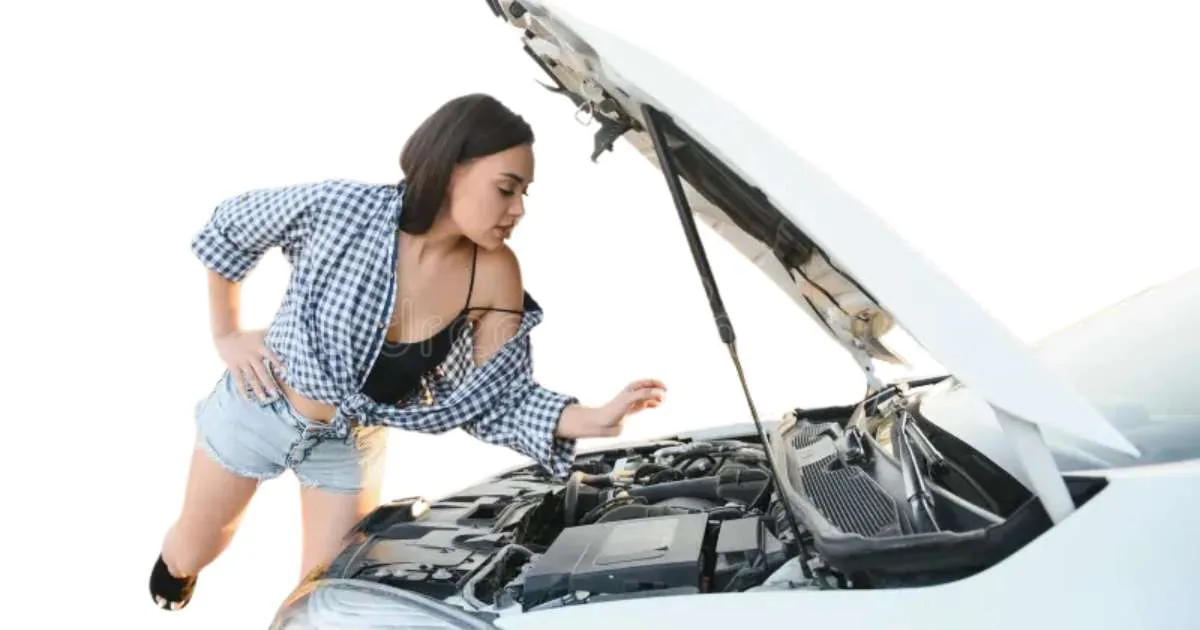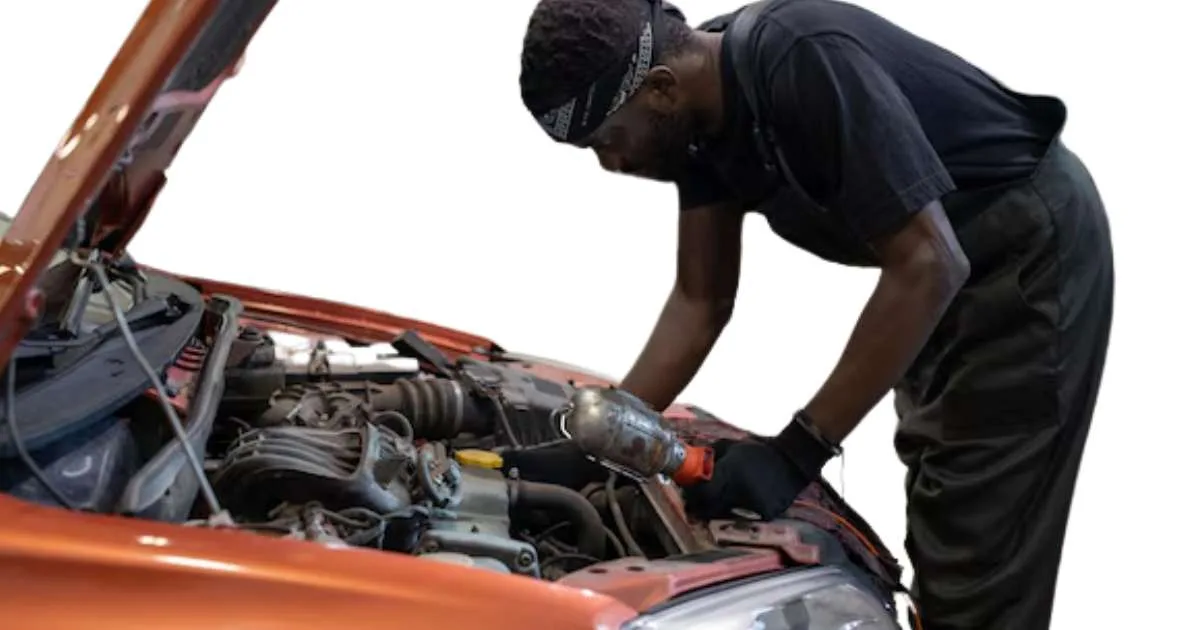
Dents in your car hood can reduce its aesthetic appeal and affect resale value. Fixing them promptly ensures your car looks its best and maintains its value.
Discovering a dent in your car's hood can be disheartening. Whether caused by hail, a stray baseball, or an accidental bump, each dent detracts from your vehicle's overall appearance. Beyond aesthetics, these imperfections can lead to further damage if left unaddressed, such as rust or compromised structural integrity.
Addressing dents quickly can help preserve your car's value and prevent more significant issues down the line. Repair methods vary, from DIY kits to professional services, offering options for every budget and skill level. Taking action to fix dents in your car's hood is not just about maintaining appearances; it's about ensuring the longevity and value of your vehicle.
 Safety Concerns With A Dented Hood
Safety Concerns With A Dented Hood
The Impact Of Car Hood Dents
Dents in your car hood can seem minor. Yet, they lead to issues over time. Car value drops. Rust might start. Here's why you should care about hood dents.
Reduced Aesthetic Appeal
First impressions matter. Your car's look is important. A smooth hood is pleasing. It shows care and pride in ownership. Dents disrupt this. They catch the eye in a bad way. People see the flaws. The car looks neglected. This can affect resale value. It suggests potential hidden damage. Buyers may walk away. Or they might offer less money.
Potential For Rust Development
Dents can damage paint. Exposed metal is a risk. Water gets in. Rust begins. This is not just a surface problem. Rust can eat metal. It weakens the car structure. Repair costs rise. Early fixes can prevent this. They save money. They keep the car safe.
| Issue | Consequence | Prevention |
|---|---|---|
| Car Hood Dents | Lower Appeal, Rust Risk | Immediate Repair |
Fix dents quickly. Use professional services. They have the right tools. They make your hood look new. Your car stays valuable. It stays strong against rust. Enjoy a good-looking, safe ride.
Safety Concerns With A Dented Hood
Your car's hood shields vital engine components. A dent may seem small, yet it poses real risks. Safety becomes a concern. Let's explore why.
Impaired Visibility
Even a minor dent can warp your car's hood. This warping can obstruct your line of sight. Driving becomes hazardous. You might miss road obstacles or traffic signs. Quick repairs ensure clear visibility. Safety on the road is paramount.
Compromised Structural Integrity
A dented hood weakens your car's structure. In a collision, it's the first defense line. A compromised hood can crumple easily, failing to protect. This can lead to greater damage and injury. Regular checks and prompt fixes maintain car safety.
Factors That Cause Hood Dents
Hood dents in your car are more than just unsightly. They can lead to further damage if not addressed promptly. Understanding the factors that cause hood dents is essential for any car owner. Let's delve into the common causes.
Minor Collisions
Even a small bump can leave a significant mark on your car hood. Parking lot incidents or tight traffic spaces often result in unexpected dents.
Hailstorms
Hailstorms are notorious for causing round dents on car hoods. The size and speed of hailstones directly impact the severity of the dents.
Falling Objects
Items like branches or sports equipment can fall onto your car, leaving dents. Parking under trees or near construction sites increases these risks.

Credit: www.facebook.com
Assessing The Severity Of Hood Dents
Assessing the Severity of Hood Dents is crucial. It tells us how bad the damage is. We need to check a few things to understand this. Let's start by looking at the size and depth of the dent. Then, we will check if the paint got hurt.
Size And Depth Evaluation
To know how bad a dent is, first, look at its size and how deep it goes. Use a ruler or tape measure. Check the dent’s length, width, and depth. Small dents are usually less worrisome. Big and deep dents need more attention. They might hurt the car more.
- Small Dents: Less than 2 inches wide. Easier to fix.
- Medium Dents: 2 to 4 inches wide. Need more work.
- Large Dents: More than 4 inches. Might need a pro.
Checking For Paint Damage
Next, see if the paint got hurt. Paint keeps the car safe from rust. If the paint cracked or chipped, the car might start to rust. This is bad and needs fixing fast.
| Paint Condition | Action Needed |
|---|---|
| No Damage | Simple dent repair. |
| Minor Chips | May need touch-up paint. |
| Cracks or Large Chips | Needs paint repair. |
 Diy Dent Removal Techniques
Diy Dent Removal Techniques
Diy Dent Removal Techniques
Discovering a dent in your car hood can be frustrating. Yet, with the right DIY Dent Removal Techniques, you can fix it yourself. This guide explores simple methods to remove dents. These techniques save time and money.
Plunger Method
This method works best for medium-sized dents. It's easy and quick. Follow these steps:
- Wet the plunger and the dent area with water.
- Place the plunger over the dent.
- Push and pull until the dent pops out.
This method is safe for your car's paint.
Hot Water And Dry Ice Method
This technique is great for small dents. It uses temperature change. Be careful with dry ice. Wear gloves.
- Pour hot water over the dent.
- Quickly apply dry ice to the area.
- The dent should pop out due to the temperature shift.
This method may require a few attempts.

Credit: www.sparpdr.com
Professional Dent Repair Options
Ignoring dents on your car hood can lead to rust and paint damage. Professional dent repair is essential to maintain your car's value. Explore two main repair options.
Paintless Dent Repair
Paintless Dent Repair (PDR) is a modern technique. It fixes dents without affecting the paint. PDR is cost-effective and quick. Here's why it's a top choice:
- No repainting needed: Keeps original paint intact.
- Less downtime: Get your car back faster.
- Eco-friendly: No paint or fillers used.
Choose PDR for small to medium dents. Ensure a technician assesses the damage first.
Traditional Body Shop Repair
Some dents need Traditional Body Shop Repair. This method is for serious damage. It includes sanding, filling, and repainting. Here's when to consider it:
- Deep dents where metal is stretched.
- Areas with cracked paint.
- Complex damage on edges or body lines.
This option takes longer and costs more. But, it restores severe dents to look new. Always consult with a skilled body shop professional.
Cost Implications Of Dent Repairs
Cost implications of dent repairs matter to car owners. Dents can lower car value. They can lead to further damage if not addressed. Understanding the cost to fix them is key. Let's explore the financial side of dent repair.
Diy Vs. Professional Repair Costs
Dent repair costs vary widely. It depends on the repair path chosen. Let's break down the costs.
- DIY Repair
DIY kits cost between $10 to $100. Time and skill are also factors. Mistakes can be costly. They might need professional fixing later.
- Professional Repair
Professionals charge more. Prices range from $50 to $500. Complex dents cost more. Paintless dent repair is cheaper. It keeps the original paint intact.
Insurance Coverage Considerations
Insurance can play a role in dent repair costs. Here are key points to consider:
| Type of Coverage | Is Dent Covered? |
|---|---|
| Liability Only | No |
| Comprehensive | Maybe |
| Collision | Yes |
Check the policy. Deductibles apply. The cost of repair might be lower than the deductible. In such cases, paying out of pocket is better. Always compare repair costs with deductibles. Report the damage to the insurer when necessary.
 Maintaining Your Car Hood Post-repair
Maintaining Your Car Hood Post-repair
Maintaining Your Car Hood Post-repair
After fixing dents in your car hood, maintenance is key. This care keeps your car looking great. It also helps maintain its value. Follow these steps to keep your car hood in top shape.
Regular Cleaning And Waxing
A clean car hood is a happy one. Dirt and grime can cause more damage. Waxing adds a protective layer. It makes your car shine too. Stick to a cleaning schedule. Use quality products. Wax at least twice a year.
Using Protective Covers
Protective covers shield your car hood. They help prevent new dents and scratches. Use covers when parking outside. Choose a cover that fits well. Ensure it's made for your car model.
Routine Inspections
Regular checks can save you money. Look for signs of rust or damage. Catching issues early is vital. Make inspections part of your routine. This will help avoid big repairs later.
- Check for peeling paint or rust spots.
- Look at the hood after harsh weather.
- Touch up small scratches quickly.
Frequently Asked Questions
Why Are Car Hood Dents Important To Repair?
Dents on your car hood can lead to rust and paint damage. It's important to fix them to maintain your car's appearance and resale value. Prompt repair also prevents further deterioration of the car's exterior.
How Can You Fix A Small Dent In A Car Hood?
Small dents can often be fixed with a plunger or a dent puller kit. Clean the area, moisten the plunger, and pull the dent out. For a dent puller, follow the kit instructions carefully to avoid additional damage.
Can Diy Methods Effectively Remove Car Hood Dents?
DIY methods, such as using hot water or a hairdryer and compressed air, can be effective for minor dents. However, they may not work for larger or deeper dents, where professional repair is recommended.
What Is Paintless Dent Repair For Car Hoods?
Paintless dent repair (PDR) is a technique used by professionals to remove dents without affecting the paint. It involves using special tools to push the metal back into place from behind the dent, preserving the original finish.
Conclusion
Taking proper care of your car's appearance is essential. Dents on the hood can lead to further damage if ignored. Quick and effective repair methods can restore your vehicle's value and aesthetics. Remember, addressing car hood dents promptly will keep your car looking its best and help maintain its integrity.
Drive safe and stay dent-free!
Disclosure
Some links may be affiliate links. That means we may earn a small commission at no extra cost to you.